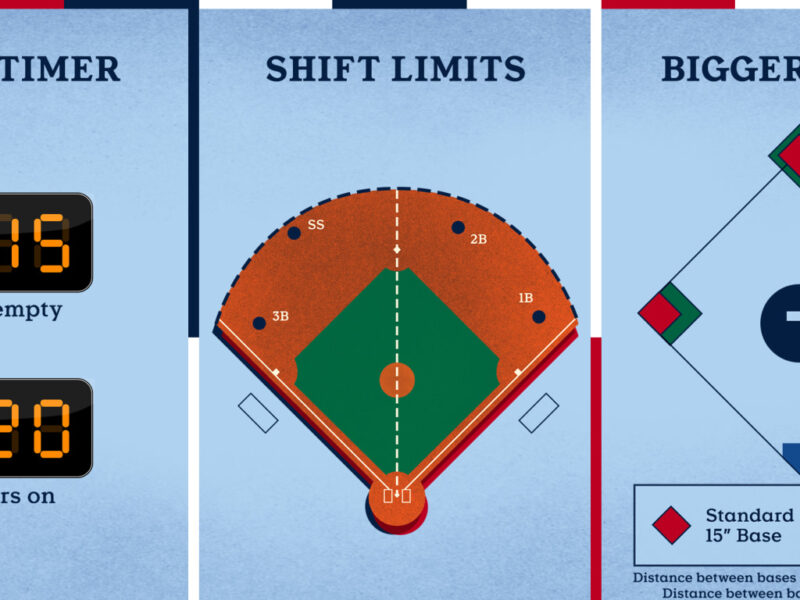For years, the stolen base seemed like a dying art in Major League Baseball. Analytics preached the gospel of avoiding outs, power hitters chased launch angles, and the risk of being thrown out often outweighed the reward of advancing ninety feet. The era of Rickey Henderson seemingly running at will felt like a distant, black-and-white memory.
But then, something shifted. Fueled by significant rule changes and a potential strategic counter-movement, the stolen base isn’t just back – it’s arguably smarter and more calculated than ever.

The modern base stealer isn’t necessarily just the fastest guy on the team; they are masters of observation, timing, and exploiting razor-thin margins.
So, what defines the “art” of base stealing in today’s game?
1. The Foundation: Elite Speed (Still Matters, But Differently)
Let’s be clear: you still need to be fast. Players routinely clocking sprint speeds in the upper percentiles have a massive advantage. Modern tracking data gives teams precise metrics on straight-line speed and acceleration, identifying prime candidates. However, pure speed isn’t enough anymore; it’s the application of that speed that counts.
2. The Jump: Anticipation and Reaction
This is where the true “art” begins. The best base stealers get incredible jumps, often gaining crucial feet before the pitcher even fully commits to the plate. This involves:
- Reading the Pitcher: Identifying subtle tells. Is it a higher leg kick for a fastball versus a quicker slide step for an off-speed pitch? Does the pitcher fall into predictable patterns in certain counts? Does their head movement give anything away?
- Timing the Delivery: Understanding the pitcher’s rhythm and anticipating the precise moment they become “locked in” to throwing home.
- First-Step Quickness: Explosive acceleration in the first few strides can make up for slightly less top-end speed.
3. Situational Awareness: Knowing When to Go
Stealing isn’t just about the physical act; it’s a strategic decision. Modern base stealers (and their coaches) consider:
- The Score and Inning: Less likely to risk an out when down multiple runs late, more likely when trying to manufacture a run in a close game.
- The Count: Favorable “running counts” (like 1-0, 2-1, 3-1, 3-2) often mean a higher likelihood of a fastball, which generally takes longer to reach the plate than breaking balls. Pitchers are also less likely to attempt a pickoff in these counts.
- The Hitter: Is a power hitter up who might drive you in from first anyway? Or is a contact hitter up, where getting into scoring position is more valuable?
- Catcher’s Arm & Pop Time: Teams meticulously scout opposing catchers’ throwing strength and accuracy, and their “pop time” (time from the pitch hitting the mitt to the throw reaching second base). Stealers target catchers with slower times or less accurate arms.
4. Leveraging the New Rules (The Game Changer)
The 2023 MLB rule changes poured gasoline on the smoldering embers of the stolen base:
- Bigger Bases: Slightly shortening the distance between bases makes a tangible difference when success is measured in fractions of a second.
- Pitch Clock: Forces pitchers into a quicker rhythm, potentially reducing their ability to vary timing or focus solely on the runner.
- Pickoff Attempt Limits: This is arguably the biggest factor. Pitchers are limited to two “disengagements” (pickoff attempts or step-offs) per plate appearance without penalty. A third unsuccessful attempt results in a balk, advancing the runner. This significantly reduces the pitcher’s ability to constantly hold runners close and plays mind games, making runners much bolder.
5. Analytics and Information:
Teams now have access to incredibly detailed data:
- Pitcher Times to Plate: How long does it take a specific pitcher to deliver the ball home from the stretch?
- Catcher Pop Times: As mentioned, precise measurements of catchers’ effectiveness.
- Success Rate Probabilities: Teams calculate the likelihood of success based on the runner, pitcher, catcher, and game situation, making more informed ” go/no-go ” decisions.
The Result: Efficient Thievery
While total stolen base numbers surged after the rule changes, the efficiency (success rate) also remained relatively high. This indicates that teams aren’t just running wild; they are picking their spots intelligently. The modern stolen base is less about pure volume (like Henderson’s 130 steals in 1982) and more about maximizing impact with a high success rate (like Ronald Acuña Jr.’s 73 steals on an 85% success rate during his 40/70 season). Players like Elly De La Cruz combine breathtaking speed with intelligent risk-taking.
Conclusion:
The art of base stealing in modern MLB is a fascinating blend of elite athleticism, meticulous observation, psychological gamesmanship, and data-driven strategy. The recent rule changes have undeniably unlocked opportunities, but the players succeeding most are those who master the subtle techniques – the jump, the read, the situational calculation. It’s a disruptive force, putting pressure on defenses, manufacturing runs, and adding a thrilling layer of speed and strategy back into the fabric of the game. It’s not just running; it’s calculated speed.
What do you think about the resurgence of the stolen base? Who are your favorite base stealers to watch in today’s game? Share your thoughts below!


